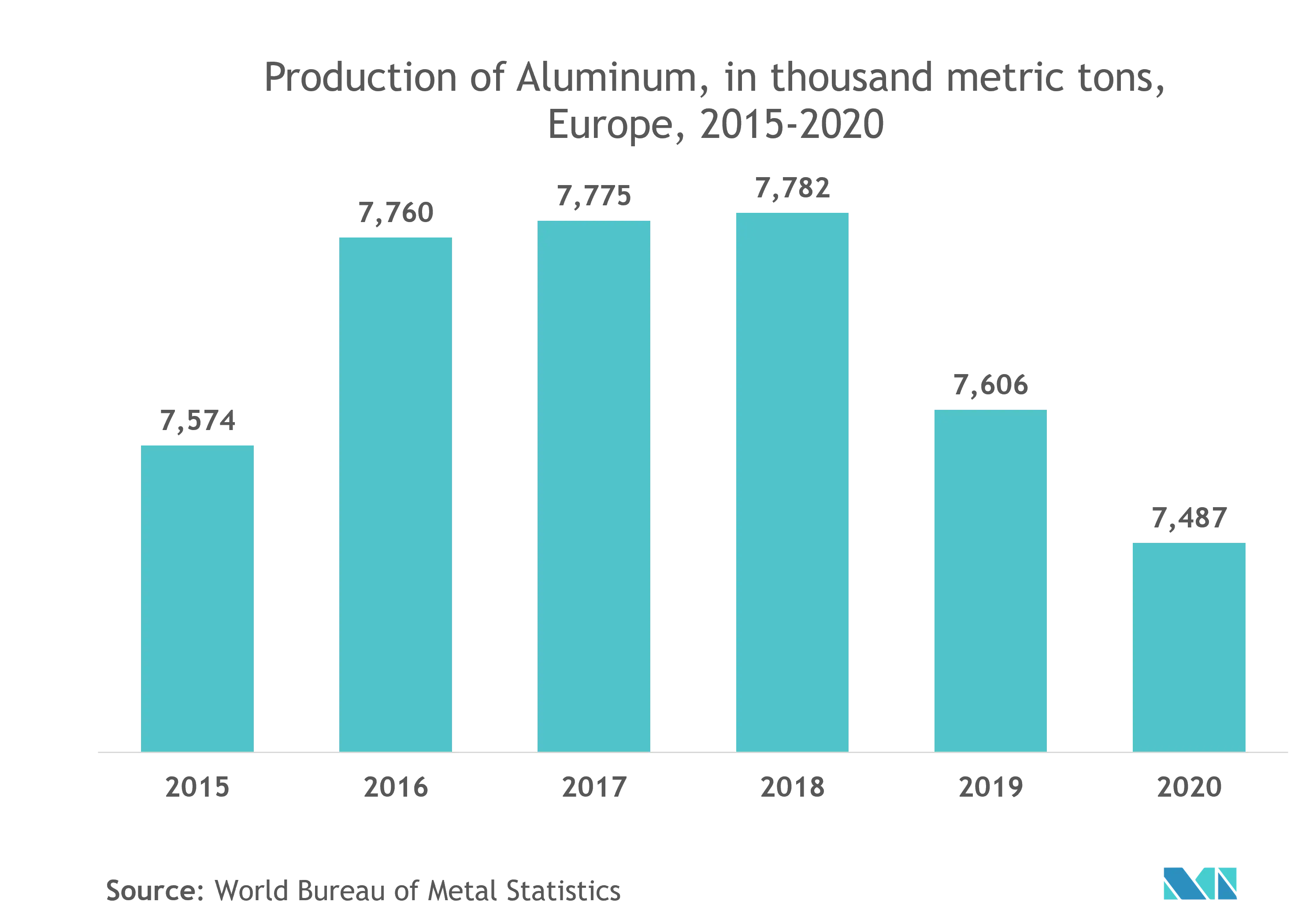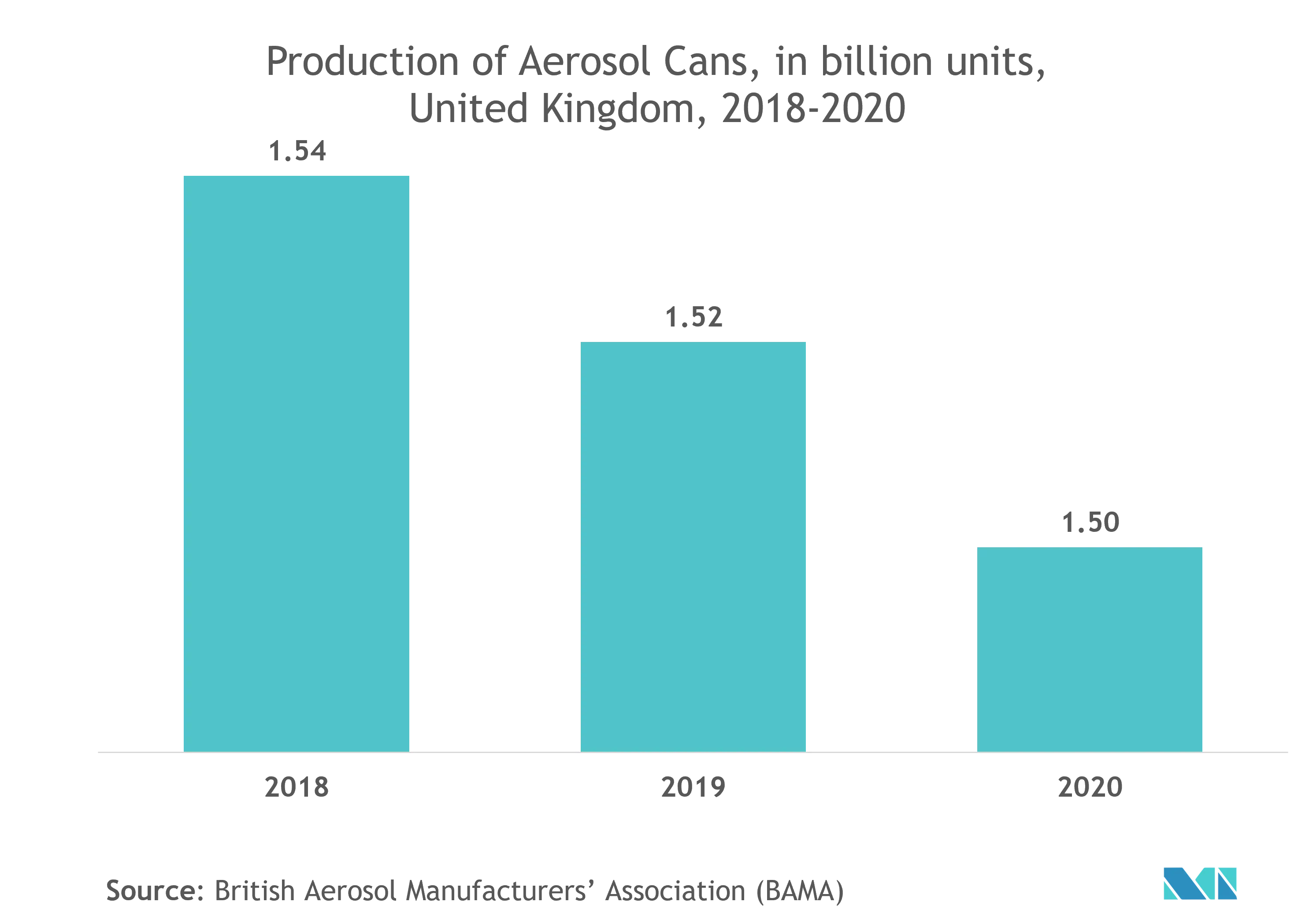Market Trends of Europe Aerosol Cans Industry
This section covers the major market trends shaping the Europe Aerosol Cans Market according to our research experts:
Aluminum Accounts For the Largest Market Share
- Aluminum is one of the most popular metals for aerosol can packaging solutions. Its metal canvas for ad printing, fast cooling, 100% recyclability, and inertness is helping for the reduction in freight weight, resulting in low transportation costs and reduced carbon emission. Its increased preference for deodorants and rise in customers' disposable income drive the demand for aluminum aerosol cans in Europe.
- Also, there was an unprecedented spike in at-home consumption of paints and hair spray in Europe. Few Europeans are using hairsprays at saloons because of gathering restrictions related to the COVID-19 pandemic in 2020. The increase in take-home sprays demand also necessitated higher UK imports of can sheets. The country relies on a mixture of domestic and imported aluminum hair sprays can sheet formed into cans by companies such as Ball and Crown.
- Overall, many factors, such as costs, environmental footprint, convenience, and flexibility offered by different packaging solutions, are driving consumers away from metal cans. For instance, Aluminum uses bauxite, and bauxite mining is very energy-intensive. The process requires a lot of energy and the conversion to Aluminum and molding to make the cans.
- Moreover, Aluminum cans offer the advantages of recyclability and ease of printing. Additionally, they are lightweight and act as excellent barriers to gases. Such factors allow a higher penetration of aluminum variants in the personal care industry than other metal cans and other materials such as plastic or glass.
- Further, The aluminum base for deodorant cans consists primarily of Aluminum, but it contains small amounts of other metals, including 0.4% iron, 0.2% silicon, 1% magnesium, 1% manganese, and 0.15% copper. A significant portion of the Aluminum used in the deodorant can industry is derived from recycled material. Approximately 25% of the total European aluminum supply comes from recycled scrap, and the personal care can industry is the user of recycled material. Some of the manufacturers stated that the aluminum can industry reclaims (recycles) more than 65% of used cans.

United Kingdom Accounts for the Largest Market Share
- Many countries in Europe, including the United Kingdom, have strict recycling laws encouraging companies to adopt aluminum over steel. Aluminum aerosol cans offer high flexibility and bright packaging, crucial aspects of the personal care industry. Moreover, the eased recyclable material availability adds to its usability, thus, driving the demand.
- In September 2020, the UK city of Leicester had partnered with the Aluminum Packaging Recycling Organisation (Alupro) and MetalMatters to promote metal packaging recycling. The Make Metals Matter campaign, launched by Leicester City Council, is likely to target over 140,000 homes in the city to remind people to recycle all of their household metal packaging waste.
- Further, it is estimated that over 168 million cans, foil trays, and aerosol containers are used in Leicester every year, and the metal they are made of is endlessly recyclable. According to Leicester City Council, if all the metal packaging used in the city’s homes was collected for recycling, it may help save 4,500 metric tons in carbon emissions, equivalent to taking 950 cars off local roads for a year.
- According to British Aerosol Manufacturers’ Association (BAMA), many users impacted due to the national lockdowns and the closure of non-essential retail, the aerosol industry was quick to adjust to the changing circumstances and respond to new market needs, with overall production still above 1.5 billion units in 2020, just 1.3% down on 2019.
- Further, in September 2020, UK-based brand management, digital print, and interactive media provider Springfield Solutions have launched a new digital embellishment service for aerosols. Until now, adding premium effects to aerosols, such as spot varnishes, gold, silver, and multi-colored foils, tactile finishes, and emboss effects, has been a costly, inflexible, and lengthy process. However, this is all set to change because of Springfield’s unique digital label embellishment offerings.


